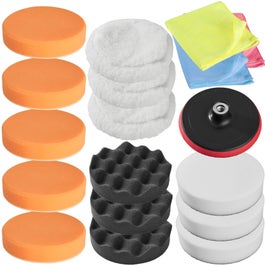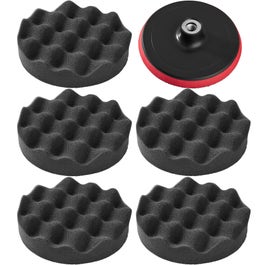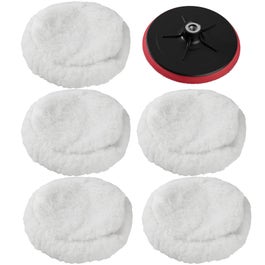Polishing sponges – make your car shine
If you want to get back that new car shine, it is only possible if you have the right accessories. The best results when polishing, waxing or removing minute unevenness in the paint can be achieved with polishing machines. The polishing sponge is inserted into the polisher by means of a support plate and establishes contact with the surface of the body. High-quality polishing sponges, among other products, can be found in the tectake range.
Polishing sponges for a hologram-free polish
Holograms are a frustrating occurrence when polishing. They are caused by a high abrasive effect of polishing pads or by unclean fibre cloths. In effect, deepened lines form in the paint, which are not very attractive when exposed to direct sunlight. With proper use of a polishing sponge from the tectake range, you do not have to worry about holograms, as the result will be even and smooth.
Polishing sponge - waffled or smooth?
Polishing sponges are made with a smooth or waffled contact surface. The buffing results produced in both cases are high quality and professional. The waffled surfaces are different from the smooth models as they provide a better control of the polishing wax. Additionally, they help to prevent the loss of polishing material due to splashes, which, in the long run, will save you a lot of polish product! Smooth and waffled polishing sponges are available to buy at tectake as well as matching polishing plates.
Applying the base layer for best results
Before the polishing sponge is used, it is advisable to work the body with a polishing pad, which is necessary for preparation of the surface. The sponges can then be used to do the fine work in the form of an immaculate high-gloss polish for professional polishing results.
Polishing sponge sets for all your polishing needs
In addition to specific sponges for polish application, you will also find 14 to 29-piece polishing sets in the tectake range. These contain sponges of different diameters and firmness (soft through to hard) as well as furs and microfibre cloths. By the way, the sponges, furs and towels are not just for the car, but can also be used for cleaning and polishing in your home. They are perfect for bringing sensitive wooden furniture, mirrors or other smooth surfaces back up to scratch.







